We signed up for a Chilean cooking workshop through Uncorked as one of my goals throughout our travels is to learn to cook some of the traditional fare. Plus we love cooking and eating (who doesn’t?!).
On the agenda/menu:
- Tour central market + purchase ingredients
- Eat sopaipillas + pebre
- Mix a pisco sour
- Cook pino filling for empanadas
- Roll out dough, assemble empanadas, prep for baking
- Plate ceviche
- Plate poached wine pears + creme anglaise
(recipes to follow, courtesy of the cooking workshop)
I loved the fact that this workshop included shopping for all the ingredients, fresh, and from such a vibrant (and enourmous!) market.
We met at the central market at 10am. It’s a seafood market the size of a city block, selling all sorts of edible ocean fare. National Geographic named it one of the top 10 food markets in the world, as it sells “an extraordinary shoal of sea creatures, from barnacles to giant squid, many unlabeled, untranslatable, or unknown outside of Chile.”
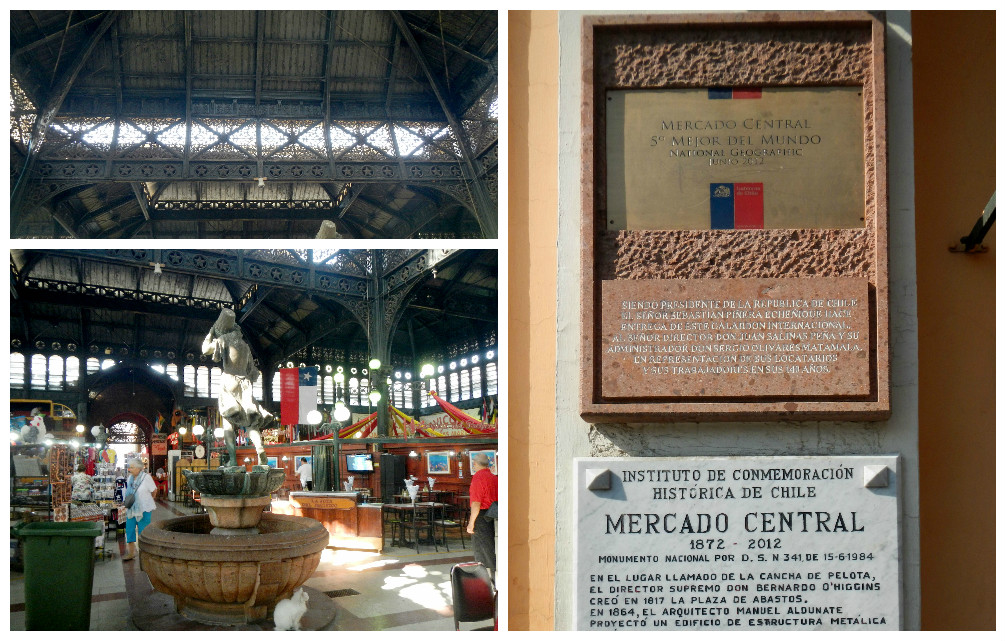
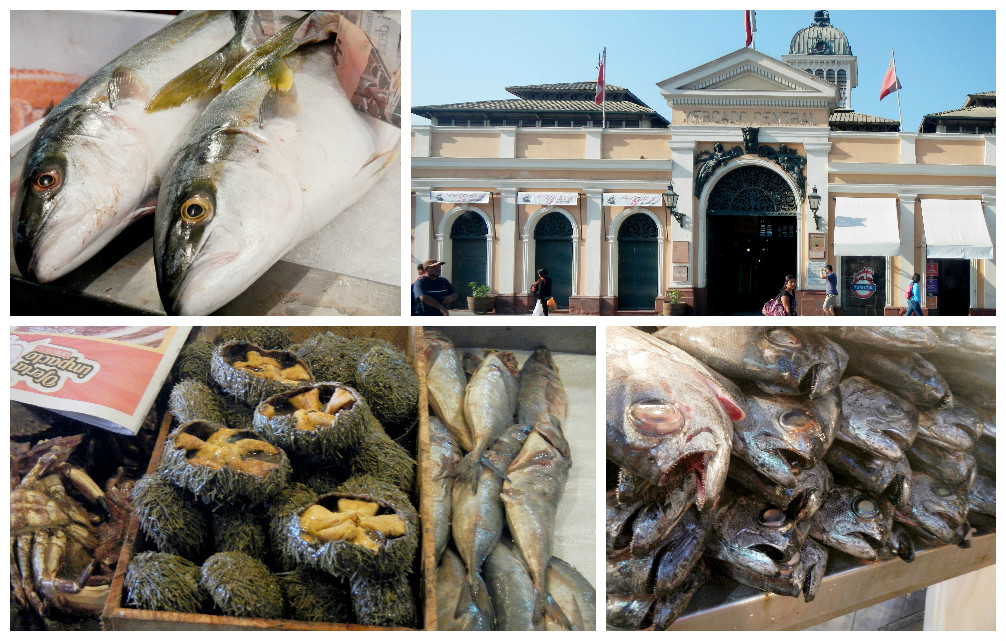
After a bit of exploring in the seafood market, and purchasing our fish for ceviche we walked over a few blocks to a flower market, just to take a peak. It was much smaller than the seafood market, and minuscule compared to the markets we were about to enter.
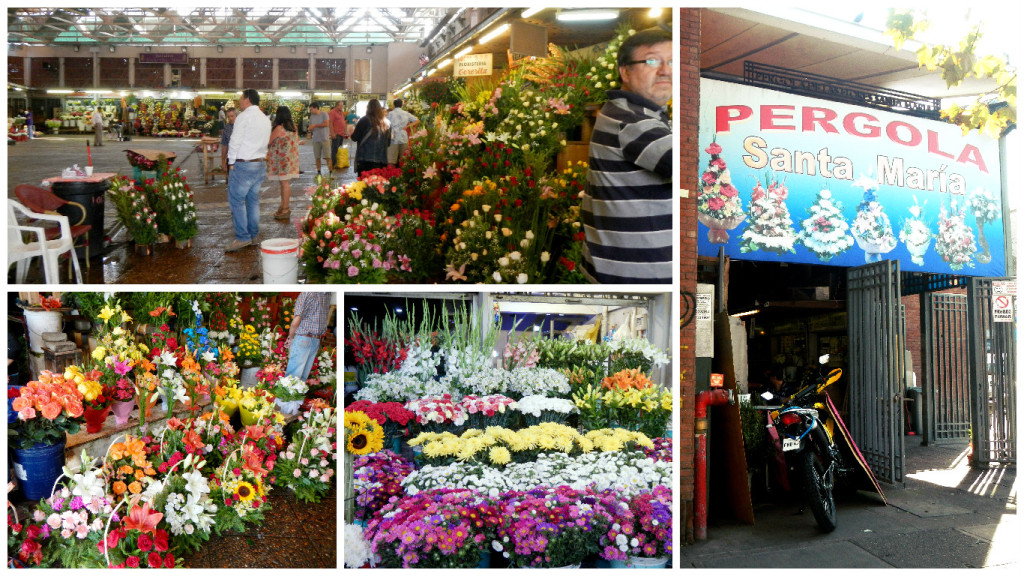

We had been warned at the beginning of our tour. If you hear anyone or even just see anyone carrying a big load or pulling a cart: move out of the way. Even buses and cars make way for folks lugging large loads.
Our guide/chef said that many of the local restaurants don’t bother storing food on location. Rather, they send over a cart to pick things up as needed. Talk about fresh!
The meat market was next where we would pick up the beef for the empanadas de pino. Our chef recommended top round for empanadas, diced into small pieces once you get home.
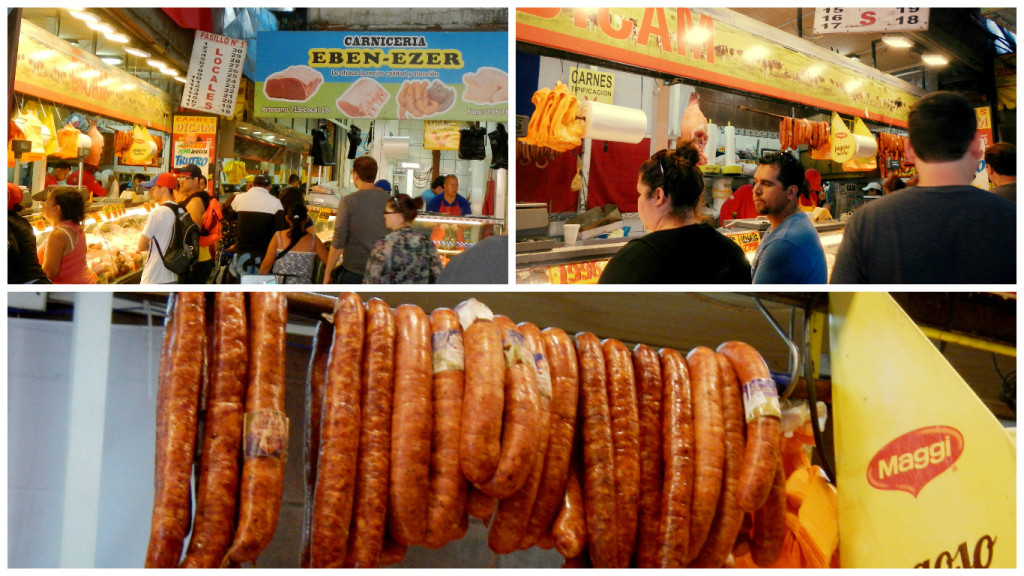
Then it was on to the most impressive market of them all: La Vega.
At La Vega, produce towers over you in massive piles while vendors yell out to advertise the quality of their goods and the deals of the day as you walk through. You can rent your own push cart in case you’re looking to buy in bulk, but it’s much easier to maneuver the narrow and busy walkways without one. A mini pull cart, similar to a backpack on wheels, is quite common and practical.
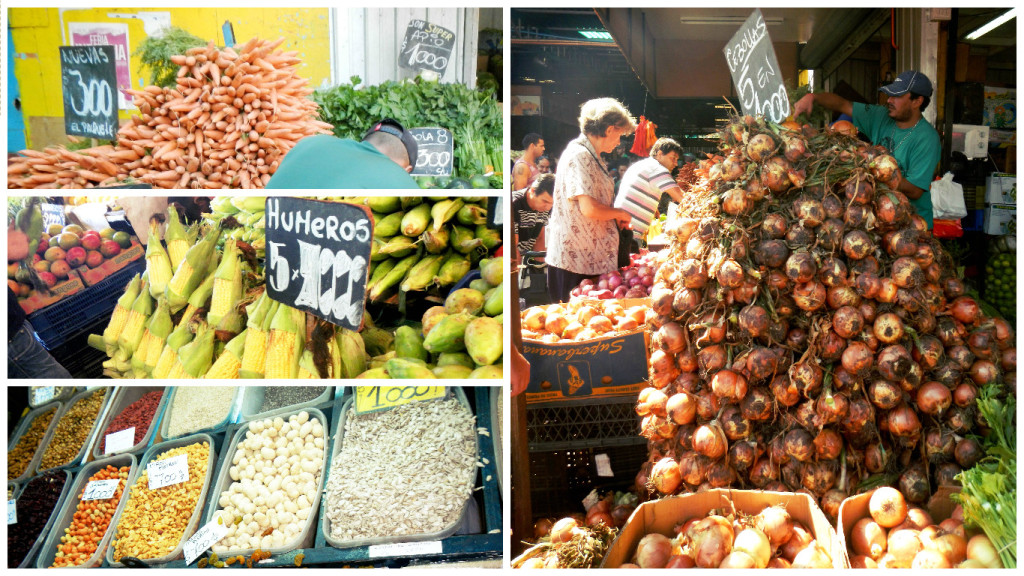
La Vega mostly sells fresh produce, although you can find also find carnicerías, stores that specialize in pickled things (olives, sauerkraut, peppers, etc.), dairy markets (cheeses and sour creams), and spice sellers. Usually vendors will specialize in things, selling only chiles, for example. However Peruvian shops are becoming more and more common as the Peruvian population in Chile grows. These are a bit more well-rounded, selling a wider variety of produce (in smaller quantities, with lots of types of potatoes), dried goods (lots of types of corn), and prepackaged imported goods as well.
Once we had all our ingredients, it was a short taxi ride to the kitchen. Our first task was to try bite-sized sopaipillas topped with pebre. Sopaipillas are a fried dough made with camote, or a pumpkin-type squash. They’re a very common street food, where vendors fry larger version of them (5-6 in. wide) and let them drain from oil stacked on a metal skewer.We were about to make pisco sours, and couldn’t do so on an empty stomach.
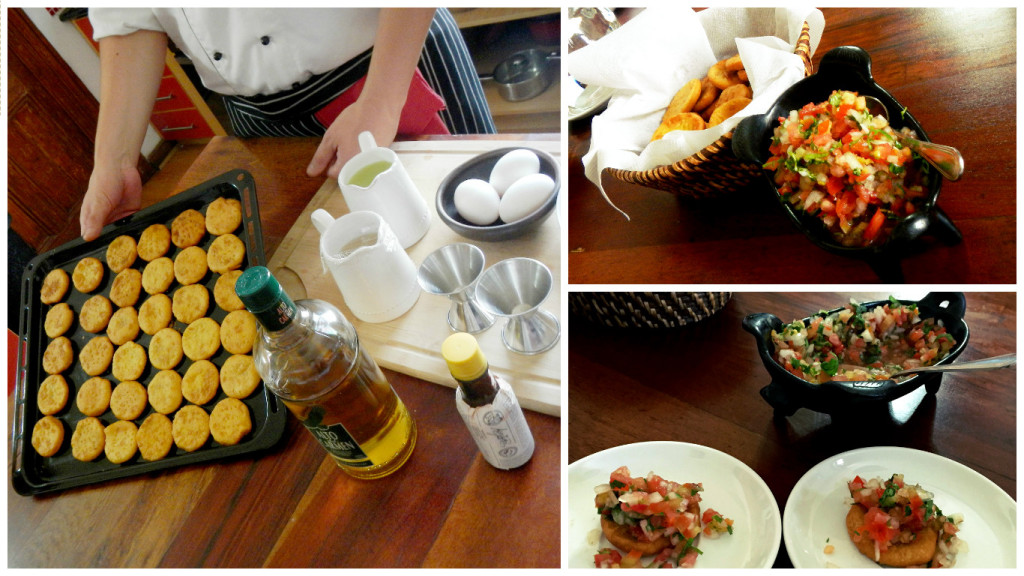
These were DE-licious, although we didn’t get the experience of making these from scratch.
We were told that the best tomatoes in Chile cannot be exported, since they are too soft to hold up to shipping and transport. But this means that we got to taste the beautifully tomato-y tomatoes! Truly, as we walked through the market I could smell them when we passed by.
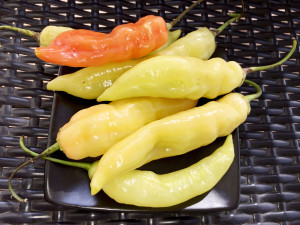
Pebre is the salsa, consiting of tomatoes, onion, cilantro, olive oil (infused with garlic, if possible), salt, and green chiles (ají verde o ají cristal). From the recipe our chef gave, the ratio is 2:1 for tomatoes:onions, everything else is “to taste.”
The word for chile in Chile is ají and traditionally Chilean food is not spicy at all. These green crystal chiles are super mild, much less spicy than a jalapeño even.
After several delicious bites of sopaipillas, we watched, and then experienced, the makings of a pisco sour:
- 3 parts pisco
- 1 part freshly squeezed lime juice
- 1 part simple syrup (can add ginger, cinnamon, lemon or orange zest, and cloves, if desired)
- 1 egg white
- 2 drops of Angostura bitters for decoration
Shake the first 3 ingredients above normally for 10-15 seconds. Add 4 ice cubes and the egg white to the shaker and then shake in a big circular motion, like you’re making circles with your full arm length as the diameter. The circular motion keeps the ice from melting too much, while helping to beat the egg whites into the fluffy body of your drink. (Watch Jon shake the egg whites into his drink)
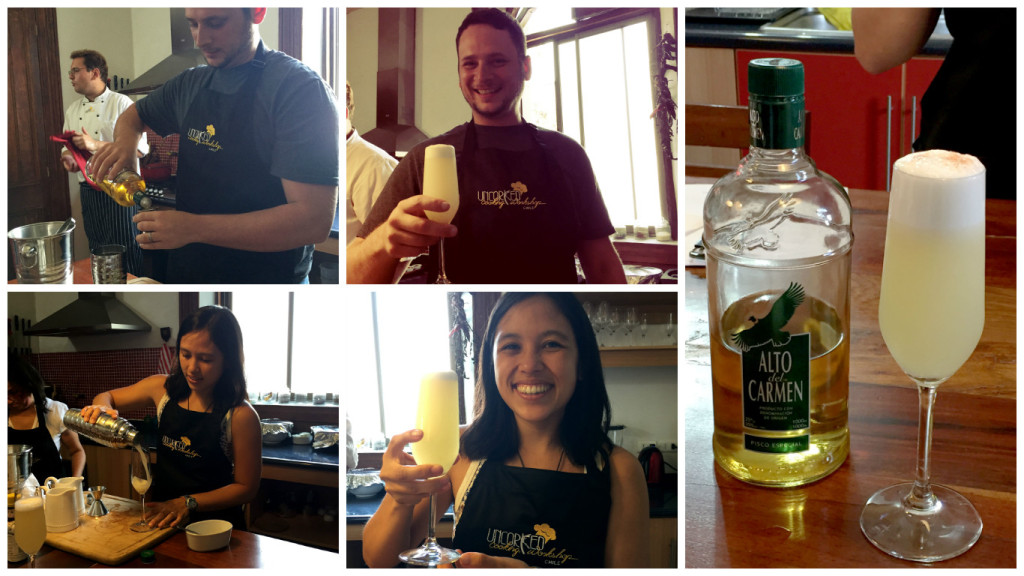
Pisco is the alcohol made from grapes. There’s more to grape alcohol than just wine, apparently!
Next came the empanada filling (aka “pino”):
- 1/2 kilo tender meat, finely diced
- 3 large onions
- olive oil
- 2 t paprika (sweet, not smoked)
- 1/2 t cumin
- 1/2 t merkén (a Chilean spice blend)
- 1/2 t oregano
- salt, to taste
- 2 boiled eggs, cut into 8 slices each
- black olives
- golden raisins
Once the onions are diced, carmelize them in olive oil on low heat until translucent and soft (20 minutes). Add the meat, salt, and other spices. Cook until the meat is done, but still juicy.
As it cooled, we rolled the pastry dough for empanadas:
- 1/2 kilo all purpose flour
- 100 g room temperature lard (melt the lard for a softer pastry)
- 2 t salt
- Hot water, approx 2 cups, in parts (if you happen to have leftover white wine available, you can substitute 1 cup)
To make the dough, mix the flour and salt. Then add the lard and mix well. Pour the first cup of hot water (or regular temp white wine) and mix with a wooden spoon. Knead until soft, adding more water if needed. To knead: press dough forward, pull back, and give it a 1/4 turn.
A tip our chef gave us during kneading was to hit/slap the dough to activate the gluten. Let the dough rest for 10-15 minutes.
 Knead out the dough and cut into circles. Tip for rolling out dough: keep even pressure in both hands and always keep the pin rolling straight out and back; if you need, rotate the dough, but never the pin. Rotating the pin is the easiest way to have uneven pressure in your hands (if that makes sense).
Knead out the dough and cut into circles. Tip for rolling out dough: keep even pressure in both hands and always keep the pin rolling straight out and back; if you need, rotate the dough, but never the pin. Rotating the pin is the easiest way to have uneven pressure in your hands (if that makes sense).
Once we all had a chance to roll out our dough and cut circles, it was time to stuff them – the most fun of the class! Each empanada got a generous spoonful or two of meat filling, a whole olive (pit too), a slice of hard boiled egg, and a few raisins. Brush water onto the edges with your fingers and fold in half to seal.
Brush the top with egg wash and bake for 20ish minutes in a 400°F oven (or until the top is golden brown). Serve with red wine!
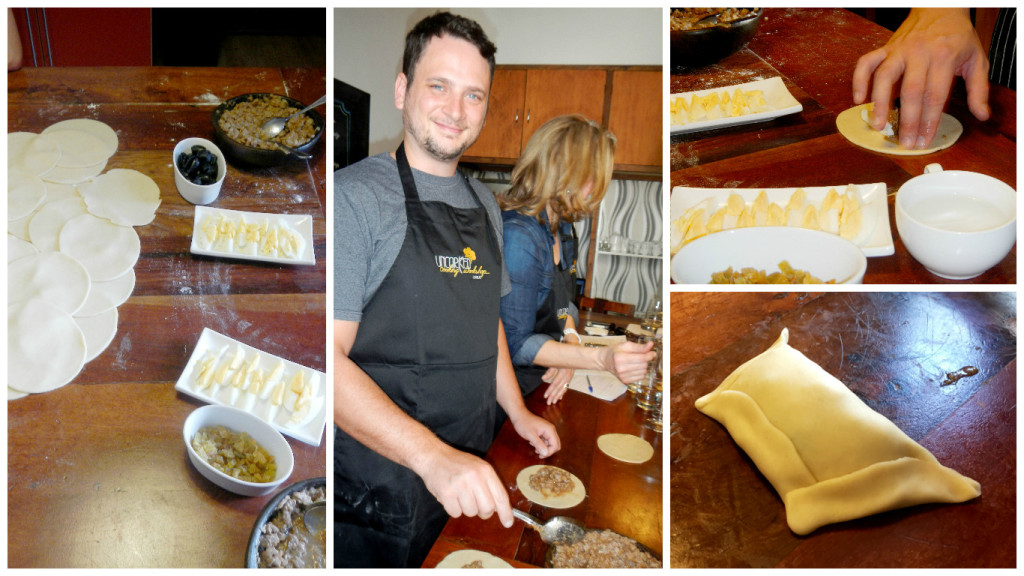
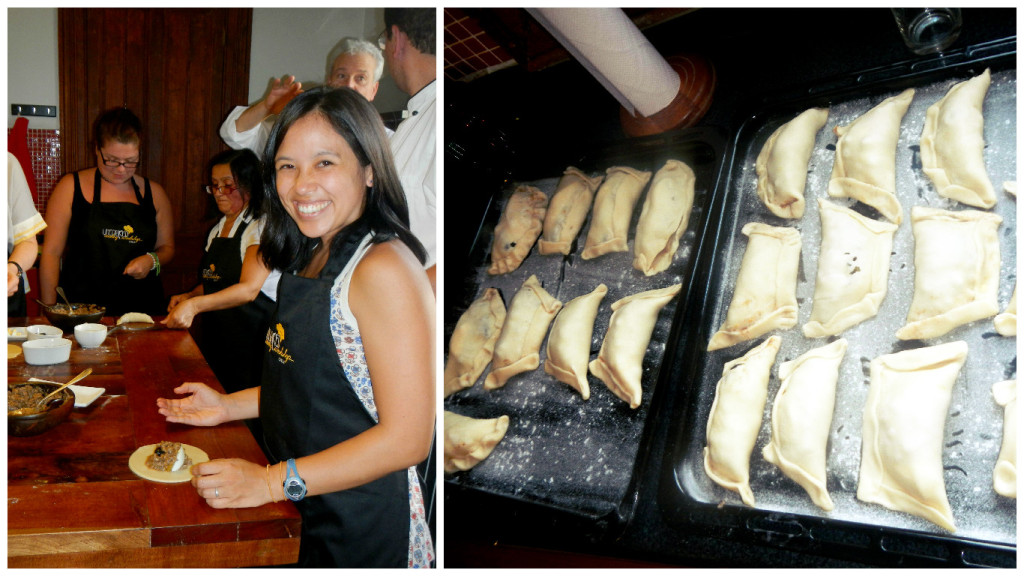
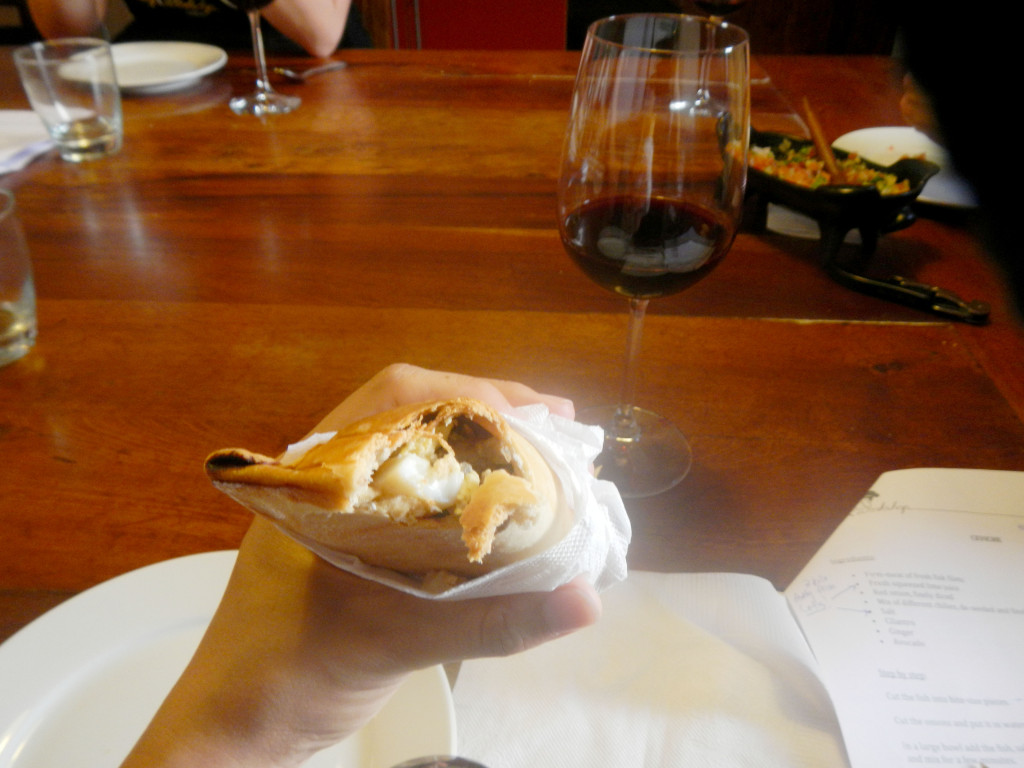
We made and ate ceviche while the empanadas were baking. Our chef did most of the chopping, but he showed us how to plate the ceviche impressively, using a circular mold.
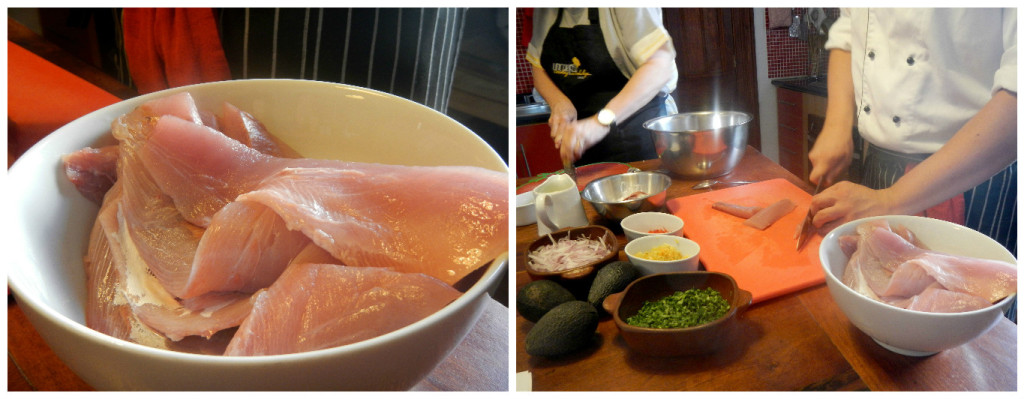
His recipe was very loose, most everything is “to taste” and depends greatly on the type of seafood used.
Ceviche (blend of Chilean/Peruvian style):
- filet of fresh, firm fish (say that 10x fast!). We used Palometa.
- freshly squeezed lime juice
- red onion, finely diced
- mix of different chiles, de-seeded and finely diced. We used crystal and rocoto chiles, but any mild chile will do.
- salt
- chopped cilantro
- grated ginger
- diced avocado
Cut the fish into bite-sized pieces. Mix with ice and lots of salt.
Cut the onions and put them into ice water.
Remove fish from ice – add chiles and mix. Add lime juice, onion (drained of course), grated ginger and mix for a few minutes. Our chef said the mixing was one of the most important parts because you want to ensure an even distribution all around. Taste and see if it needs more of anything.
Finally, add the cilantro and diced avocado and mix (try to keep from mashing it). One more taste test before it’s ready to go.
Serve on chilled plates with some toasted bread and green salad. Enjoy with a cold sauvignon blanc.
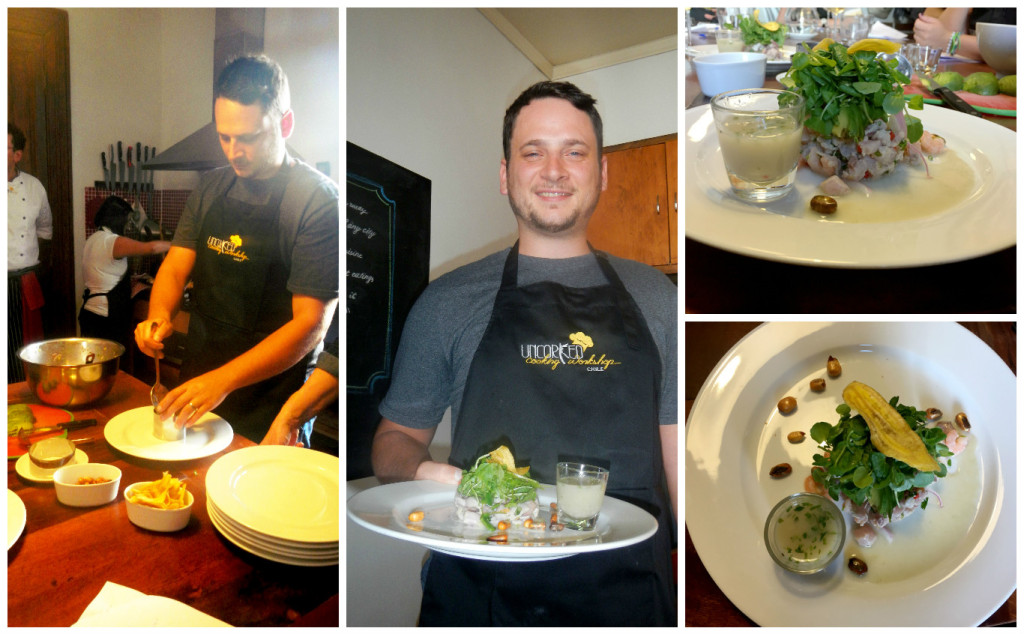
Finally, dessert of red wine poached pears, a great example of something fancy that is “simple.” 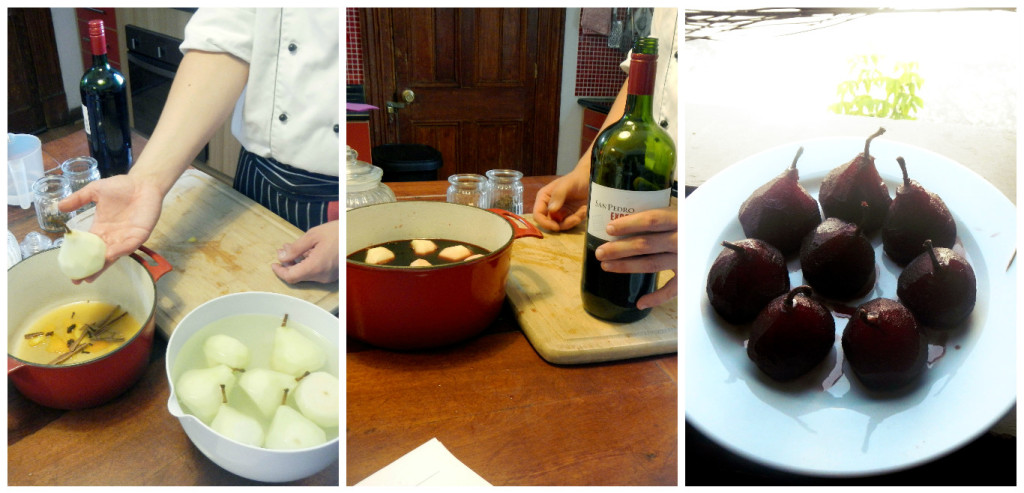 You’ll need:
You’ll need:
- 6 firm pears
- 500 cc dry red wine
- 200 cc of water
- 200 g of sugar
- zest of one orange (no white pith please, only orange; doesn’t have to be “zested” peeled with a knife is fine, this will be easier to strain later)
- juice of one orange
- 1 cinnamon stick
- 2 cloves
Carefully peel the pears, leaving the stem on. Slice 1/2 inch to create a flat bottom so they’ll stand up when finished. Once peeled, submerge them to keep them from browning.
Combine the remaining ingredients. This is your poaching liquid.
Gently place pears in poaching liquid, cover, and simmer for around 20 minutes, turning every five minutes to ensure even color, until pears are cooked but still firm.
Carefully remove pears from liquid, and allow them to come to room temperature. Meanwhile, reduce liquid by about half over medium-high heat for 15 minutes, until liquid is syrupy.
Remove liquid from heat and allow to come to room temperature. Once cool, cover and chill both pears and syrup in the fridge for at least 3 and up to 24 hours.
Drizzle pears with 2 tbsp syrup and serve with creme anglaise or ice cream.
Our desserts were more or less room temperature since we didn’t have the time to cool them in the fridge, but they came out beautifully!
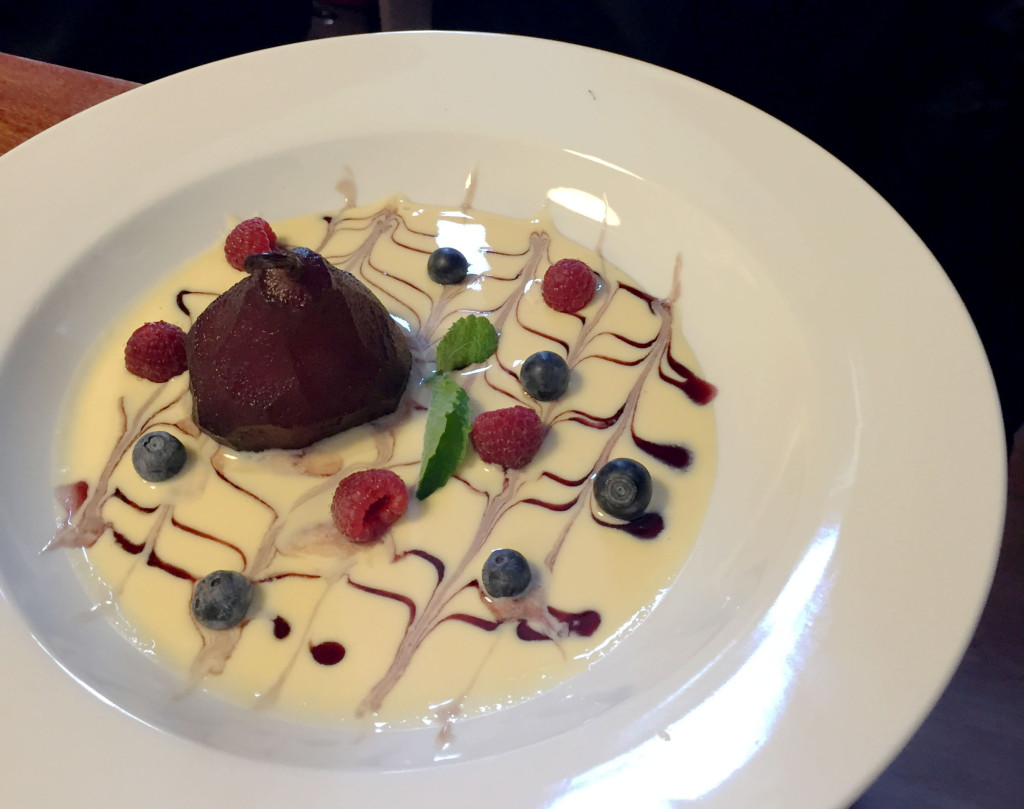
Now the creme anglaise looked most complicated, but seems to be in every chef’s repertoire as a pouring custard, or even a base for ice creams.
Creme anglaise, or “English Cream” as our chef called it:
- 125 g sugar
- 6 egg yolks
- 500 ml whole milk
- 1 tbsp vanilla extract
- 1 cinnamon stick
Stir 1 cup of milk with the egg yolks.
Heat the rest of the milk, sugar and cinnamon stick in a small saucepan over medium heat.
Gradually pour the milk/egg mixture into the saucepan on low heat, stirring constantly. Do not let the mixture boil! The goal is just to thicken it until it coats the spoon. Strain to remove cinnamon and any of the egg membrane. Cool at room temperature, then refrigerate.
We tried the empanada recipe on our own days after (with a few tweaks for convenience) and I was impressed at how well they turned out. What’s your favorite Chilean food? Any other tips or tricks you know of? Comment below!

Nice cooking
Thanks, we learned a lot.
Oh my!! Immersion for you two and rich education for us readers, going through the shopping, then the cooking processes. Love how your chef shared simplifying cooking tips, e.g. knife cut zests!
I hope when we’re all together again we can have a kickass pot luck… or you two can just make us dinner! I love me some good ceviche, and I adore empanadas of all sorts. I’ve been wondering if the place I used to go in Adams Morgan in DC is still open. It was always my go-to metro food because you’re not really supposed to eat or drink on the metro in DC, but I often didn’t have time to eat in between jobs, or the available hands to feed myself due to carrying work related materials! Obviously, I regularly broke the rules :P.
I’ve heard of an empanada place in DC (I wonder if it was the same one!). There are so many kinds of fillings! I’ve loved the Chilean empanadas de pino and in Argentina the spinach/cheese and chicken ones are my favorite so far.
BEST post so far! hahahaha I want in on that potluck BTW.
😀